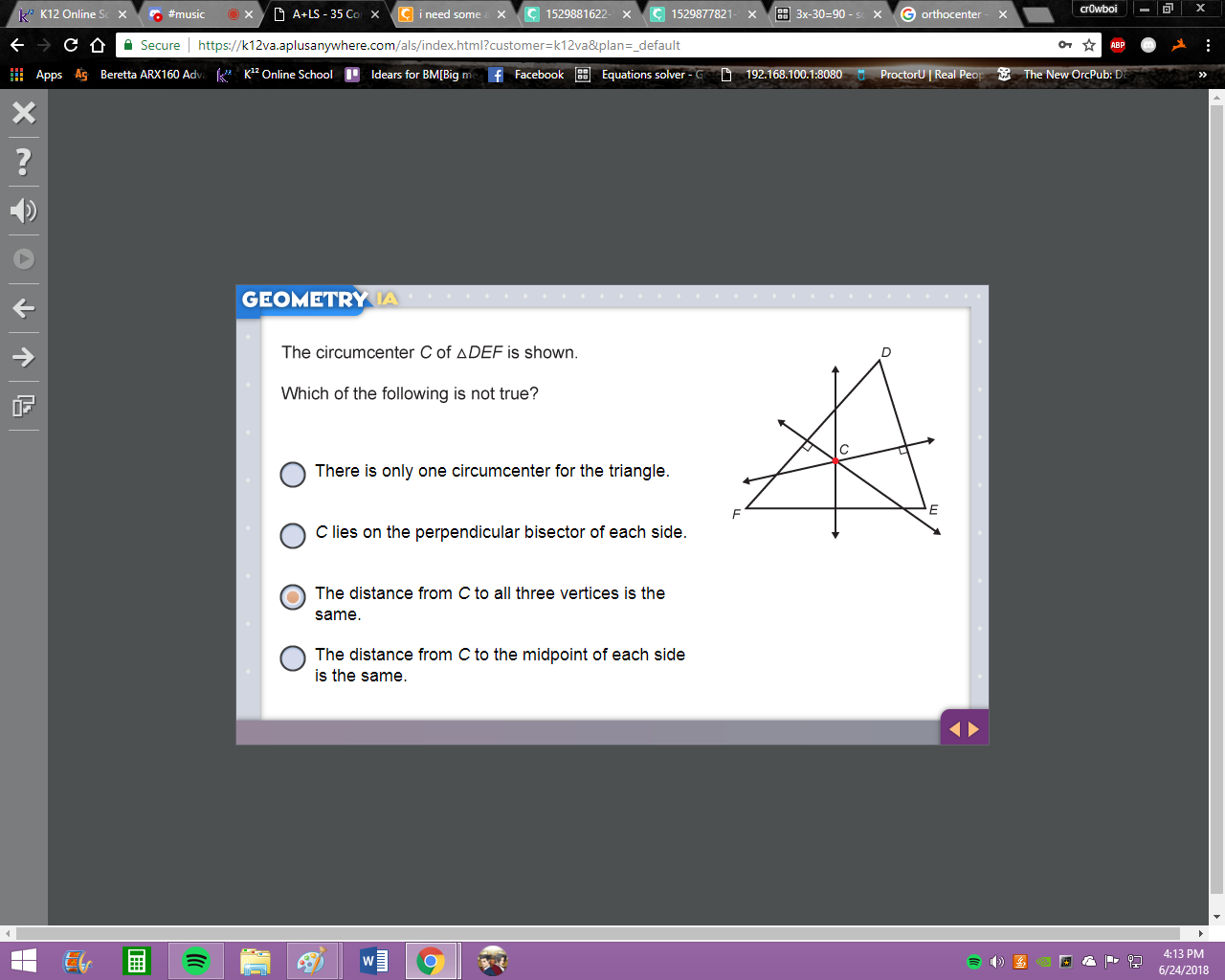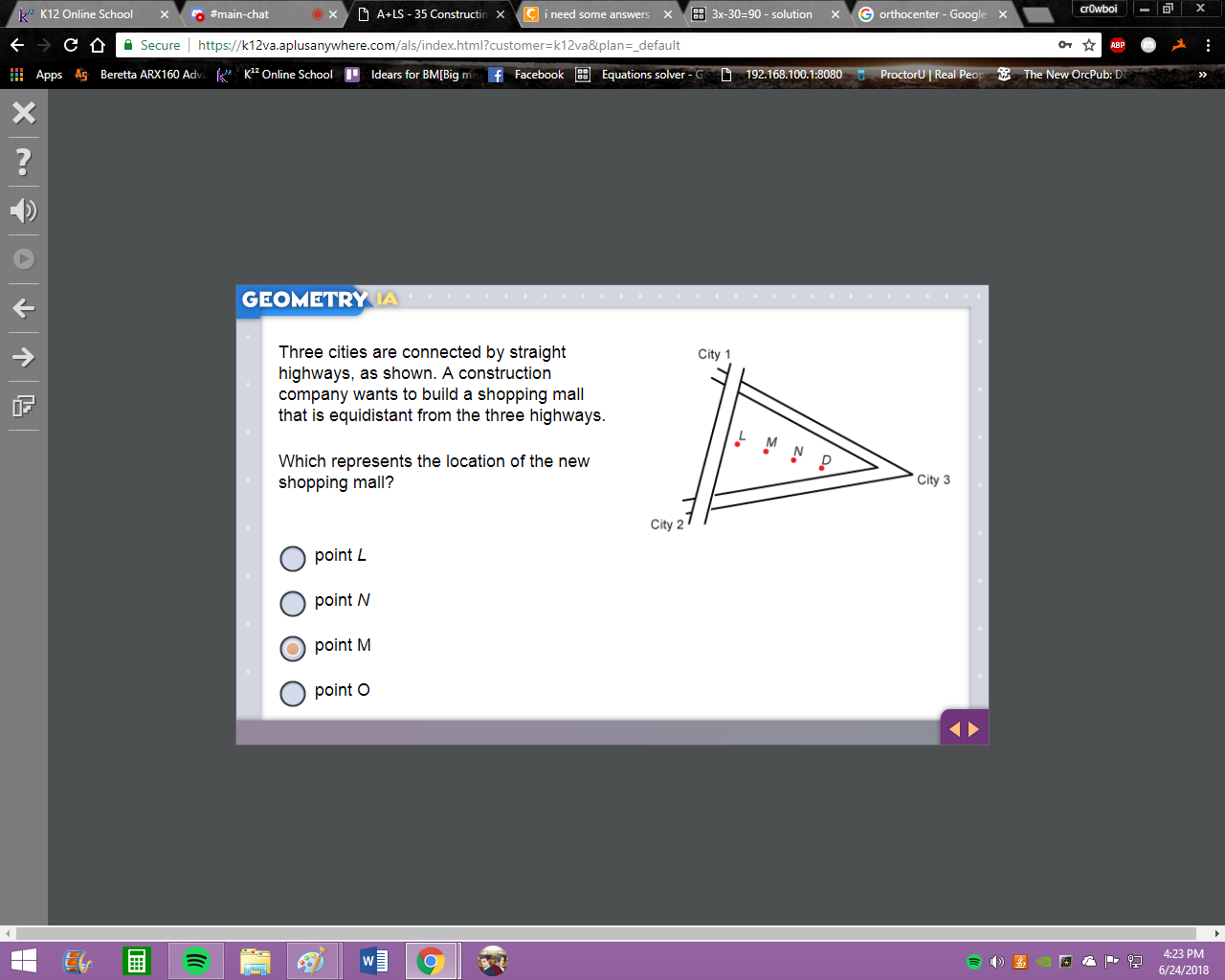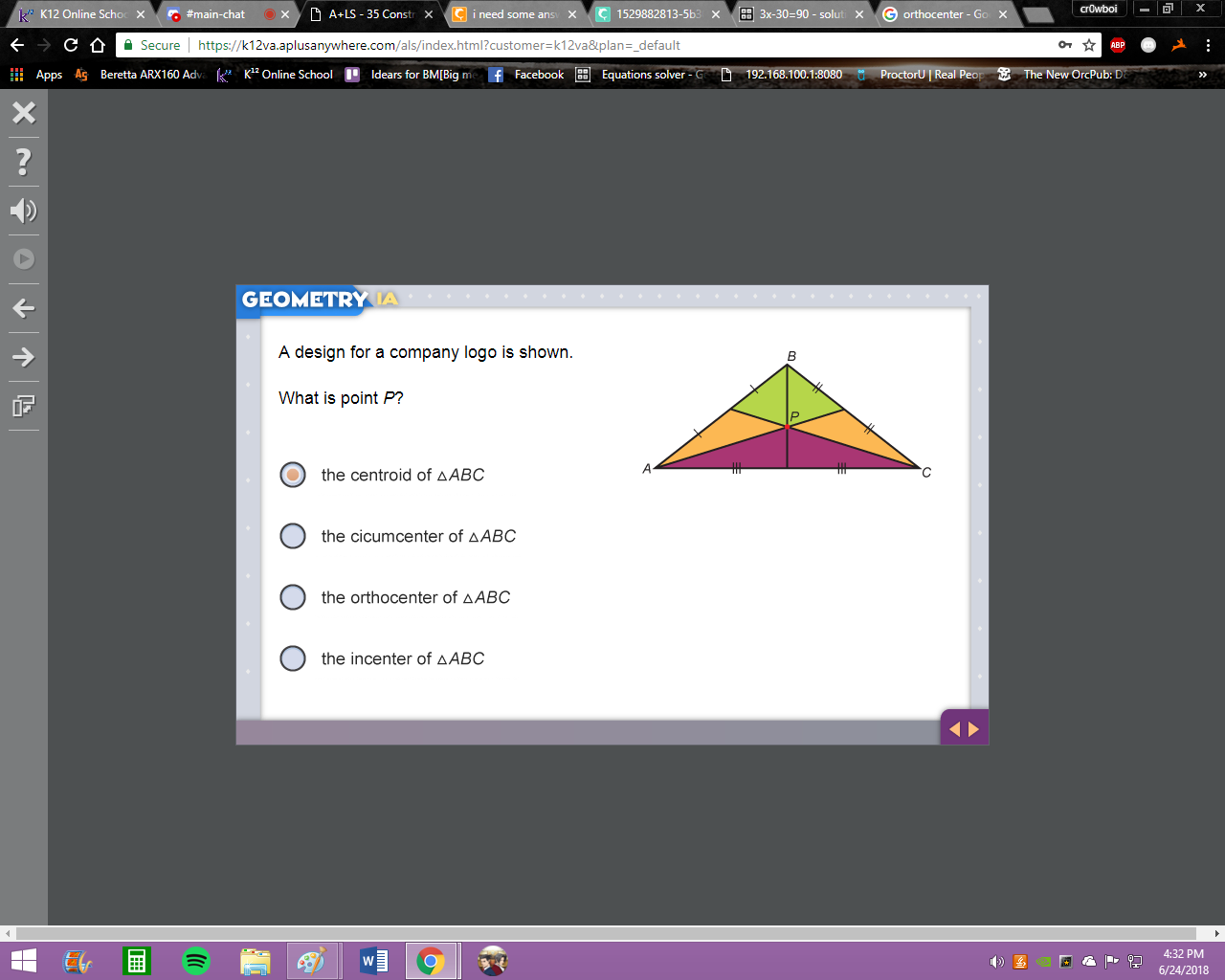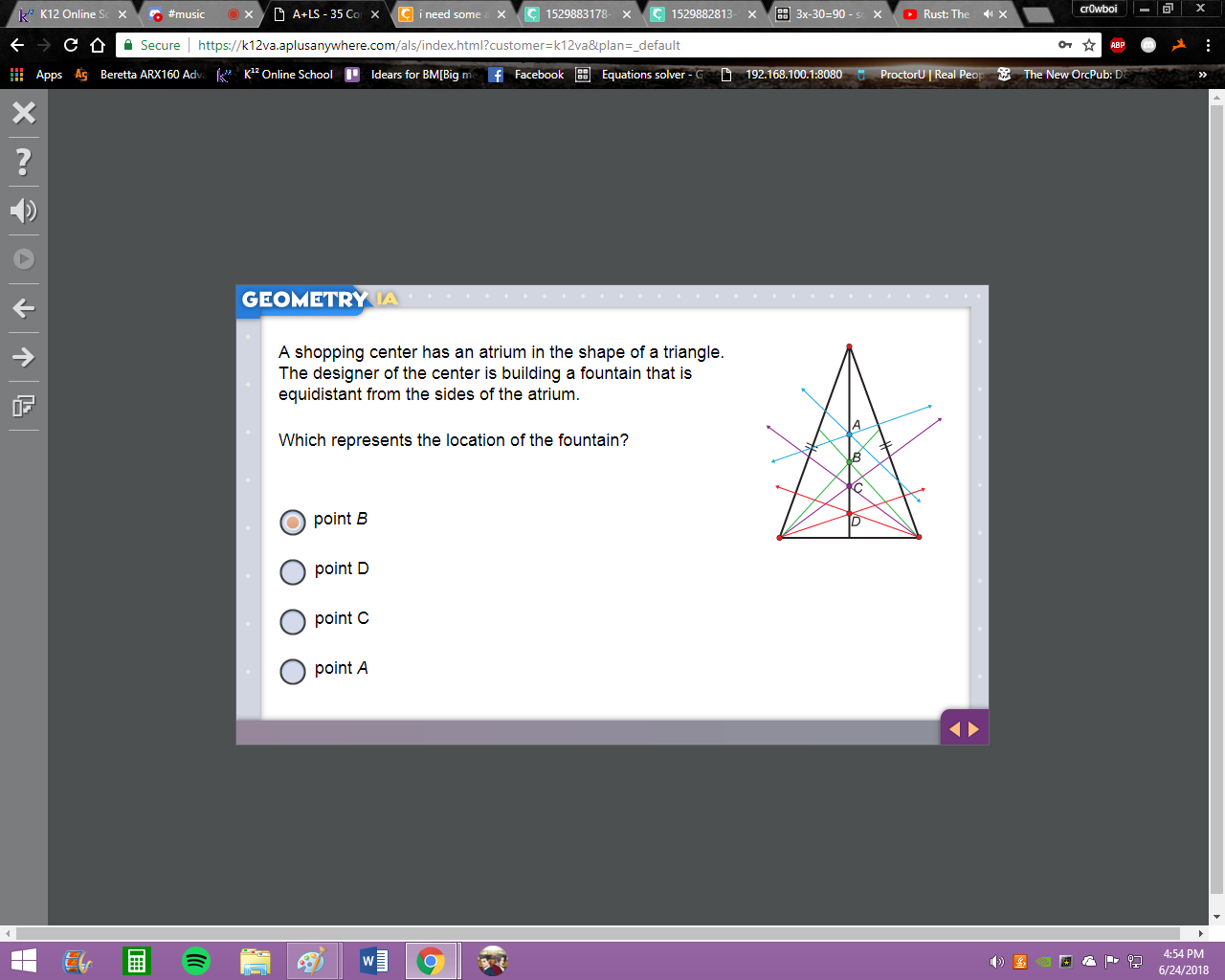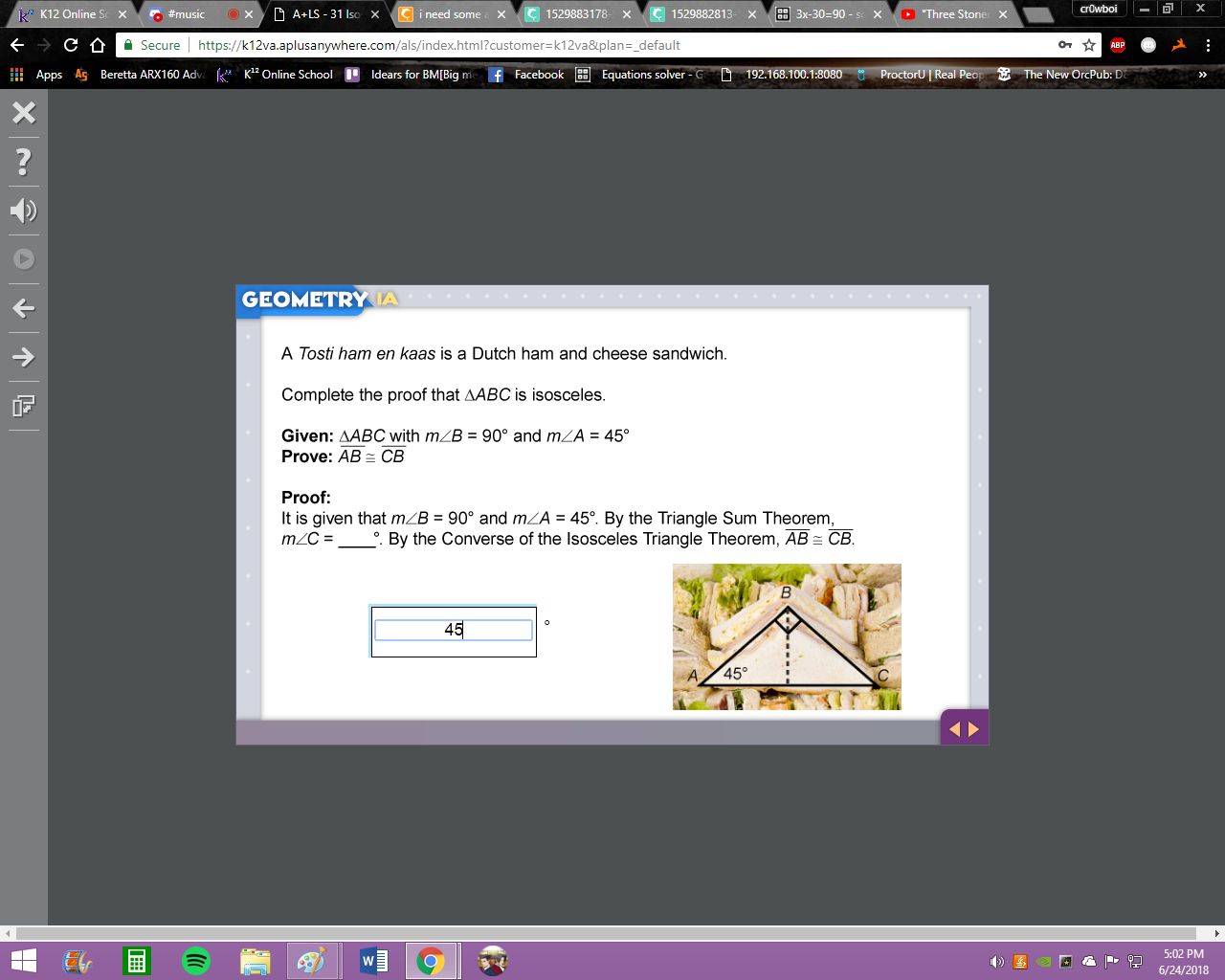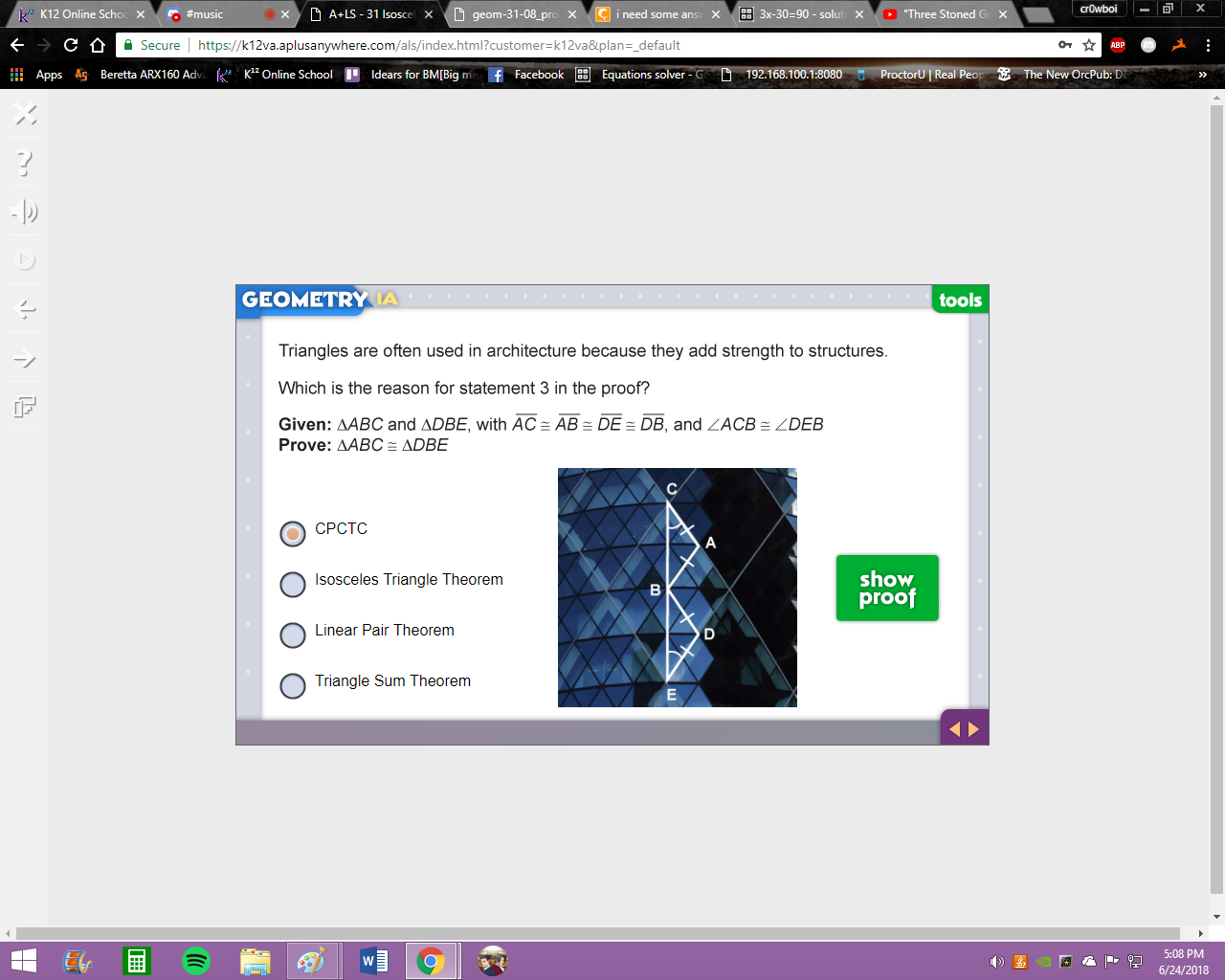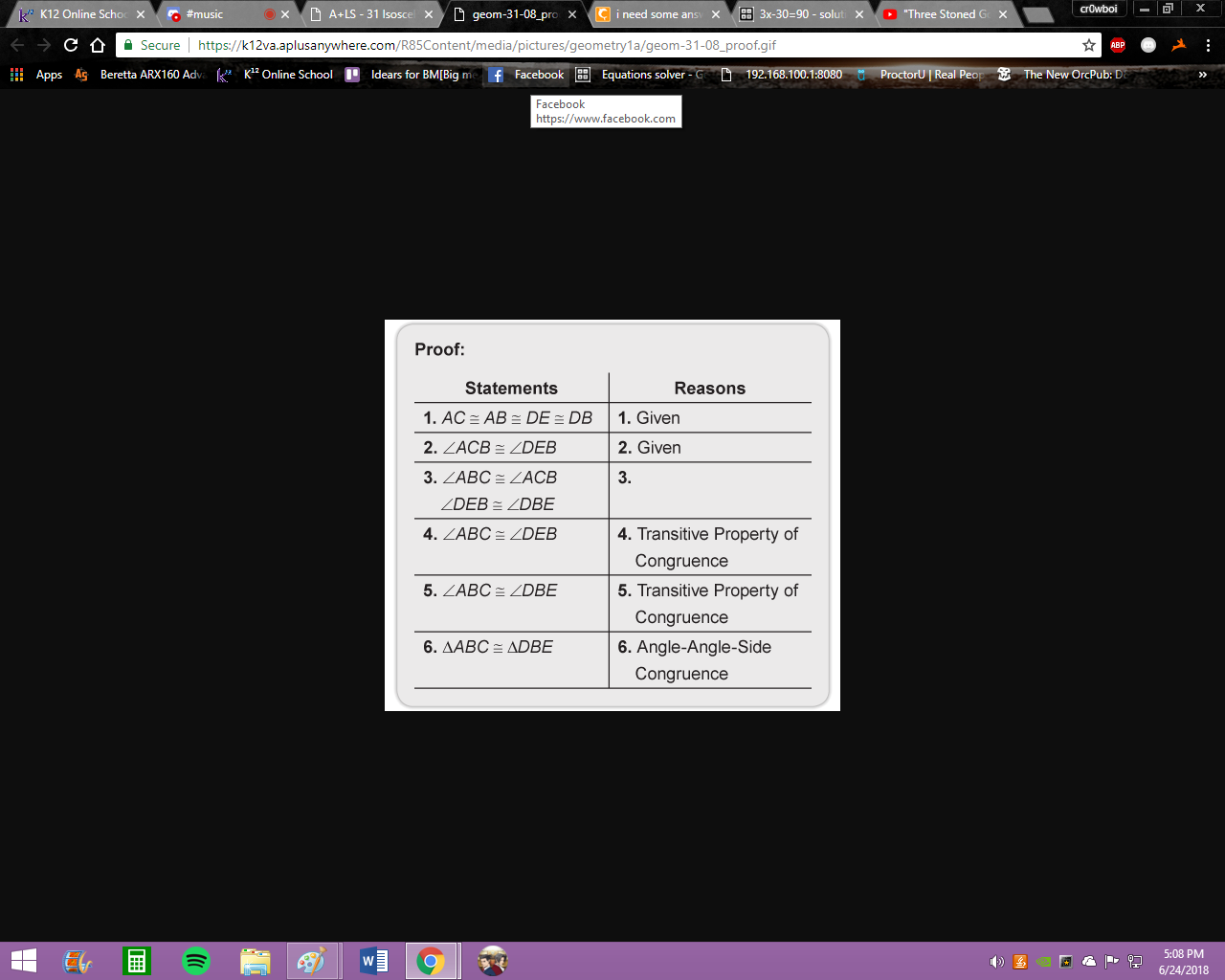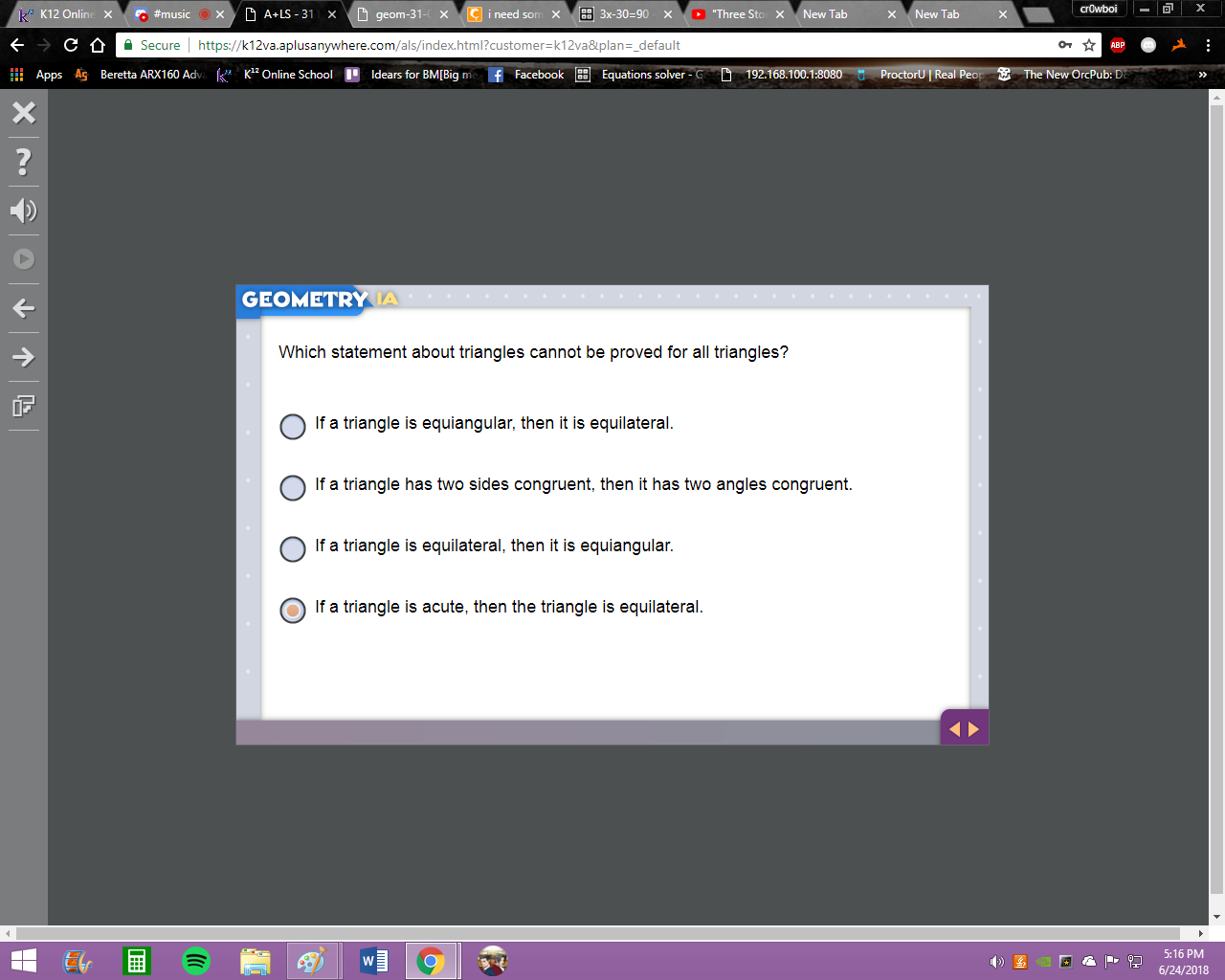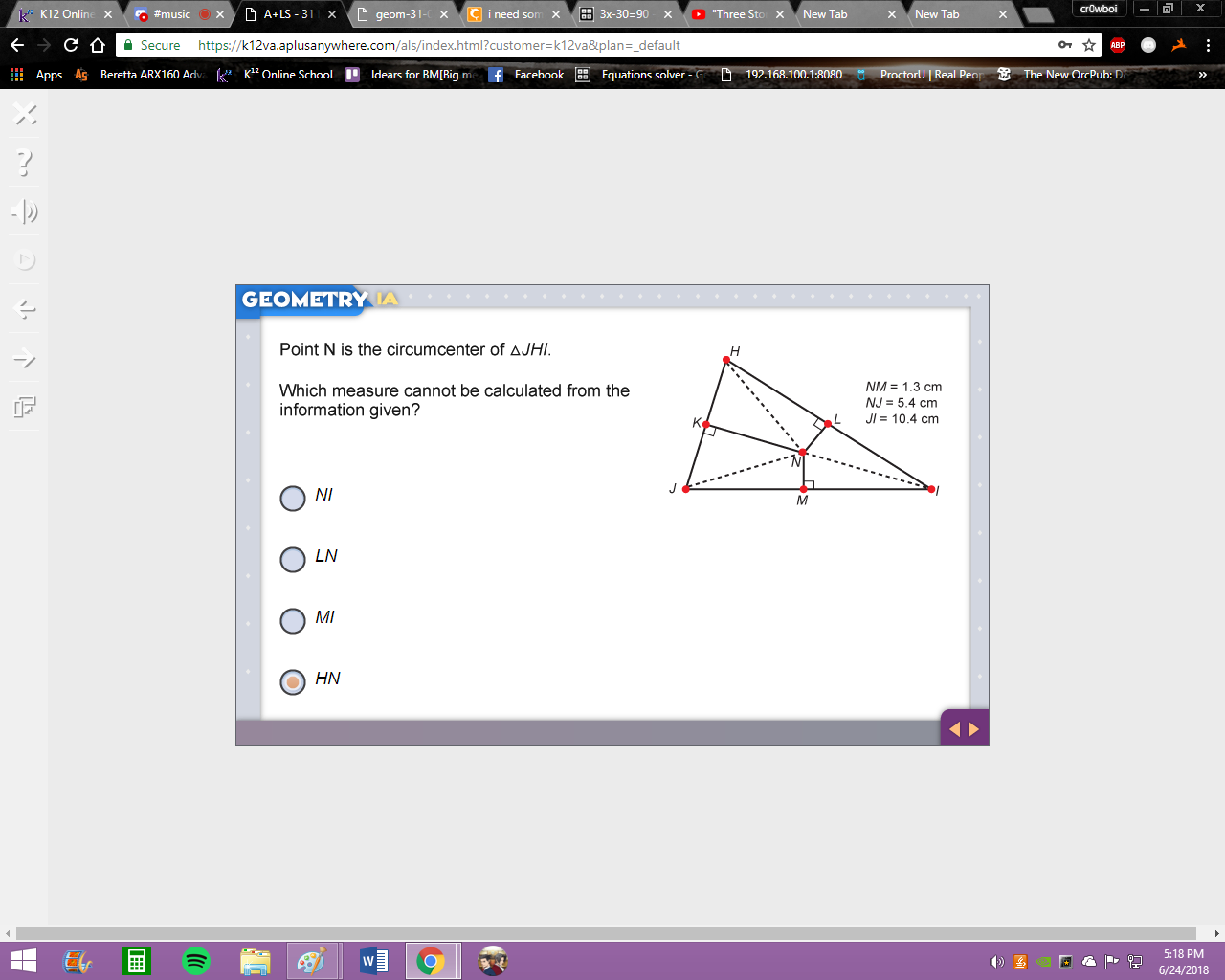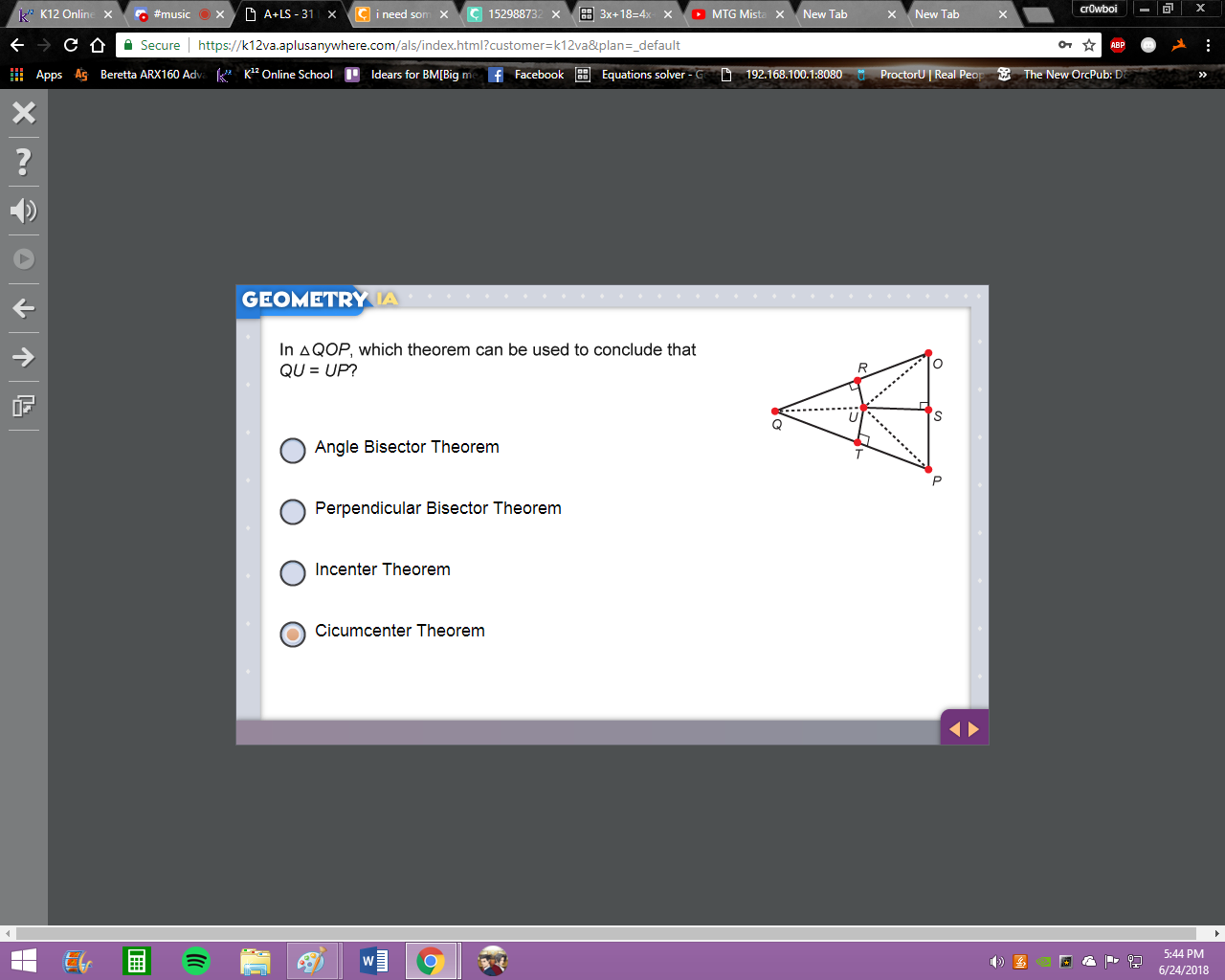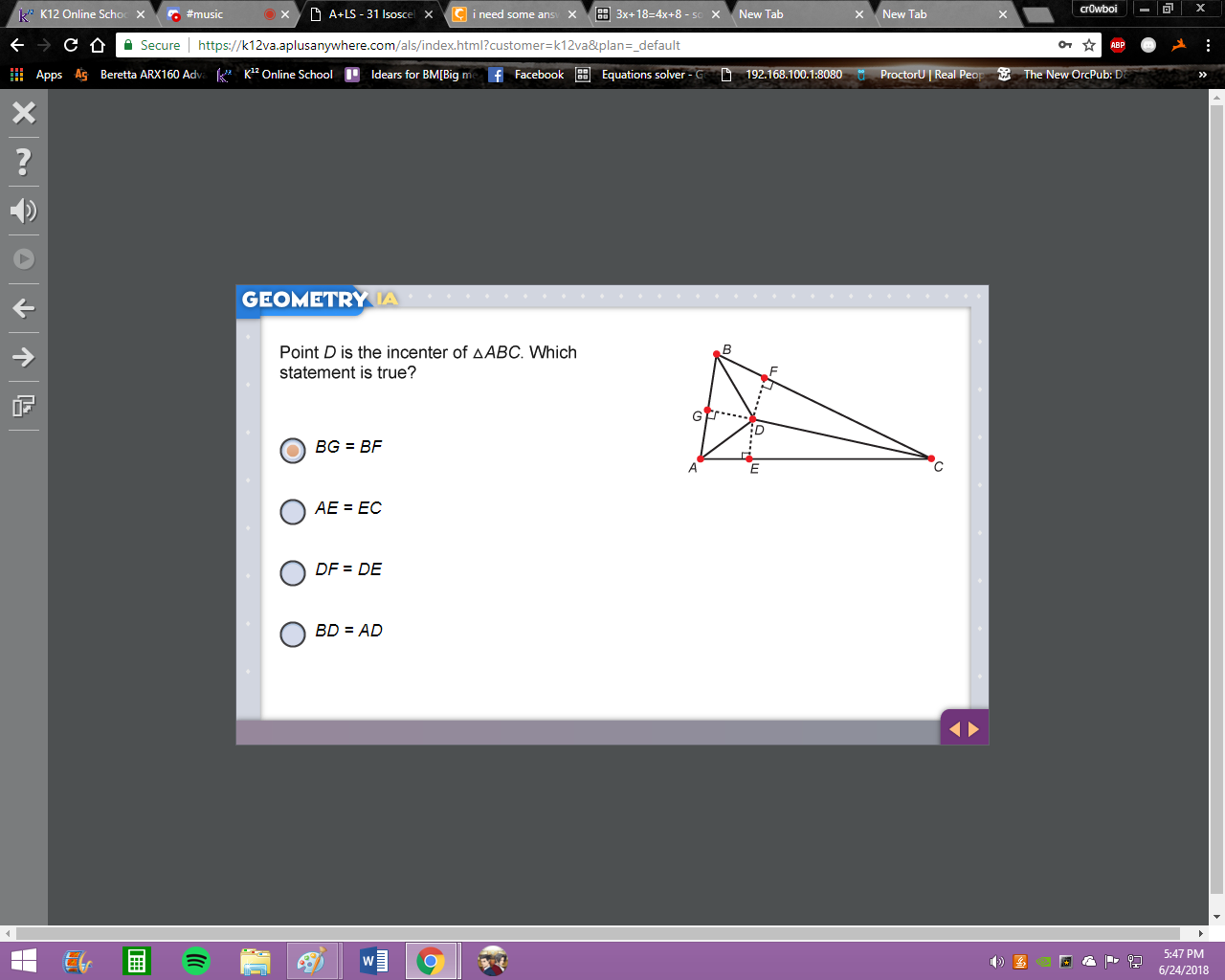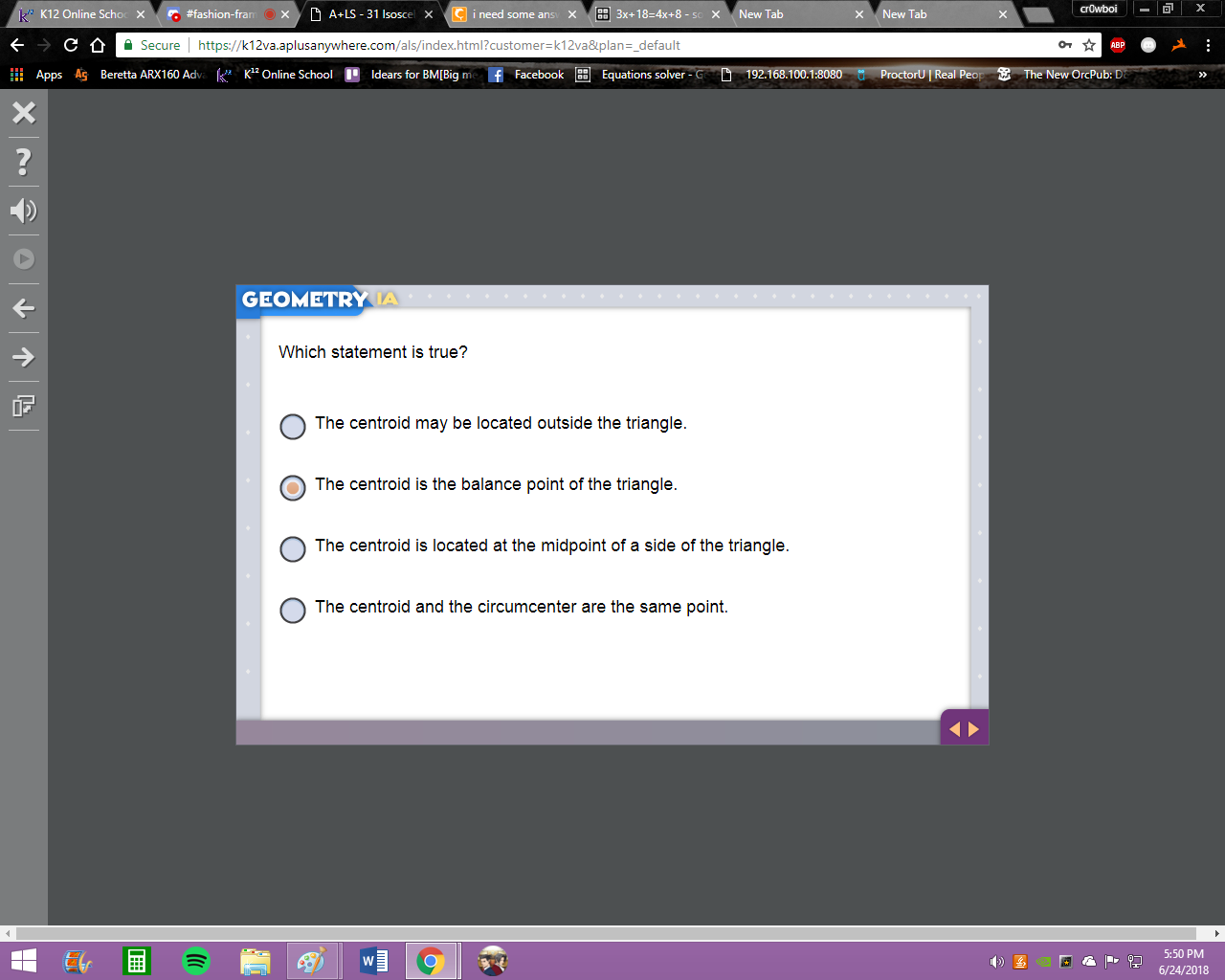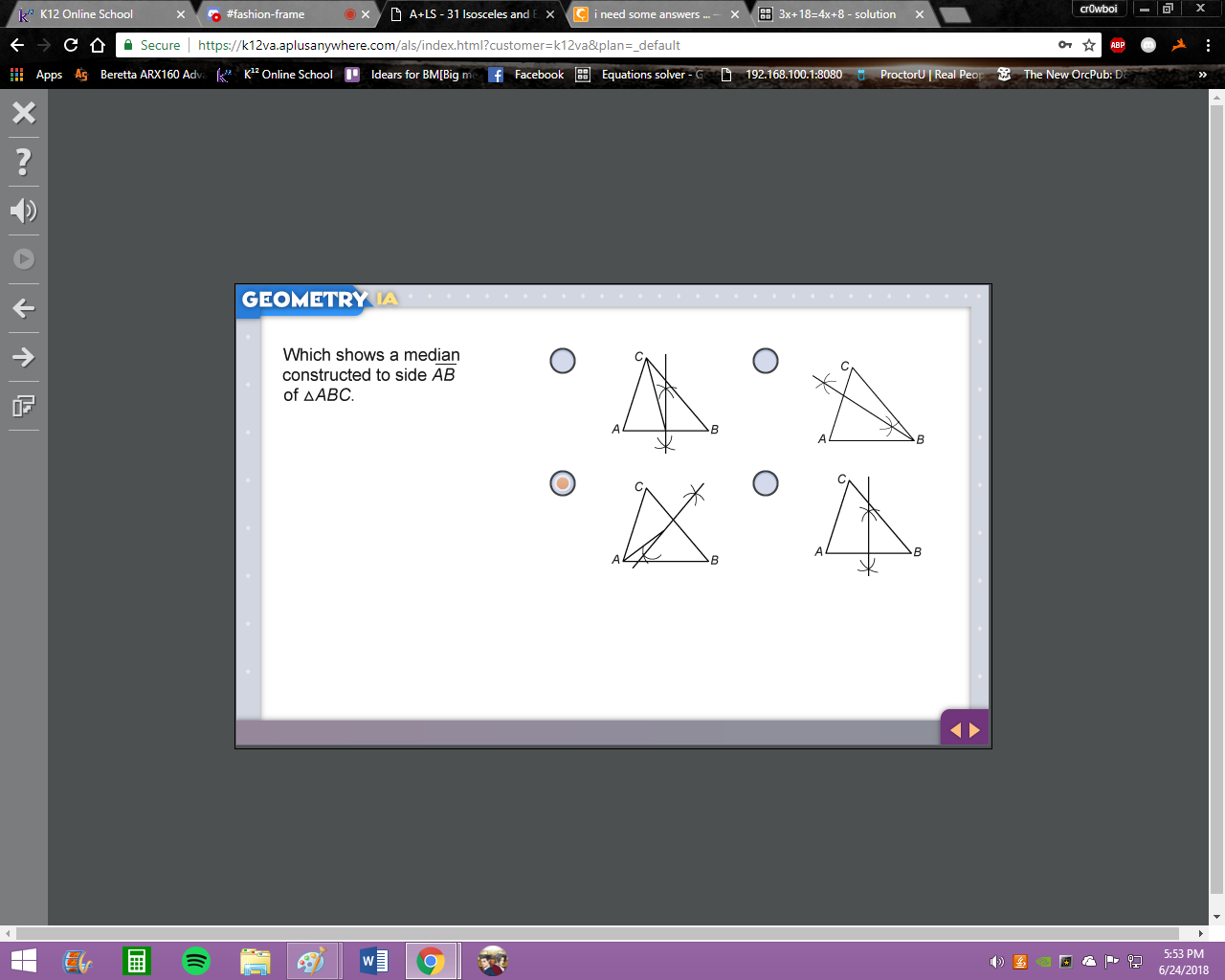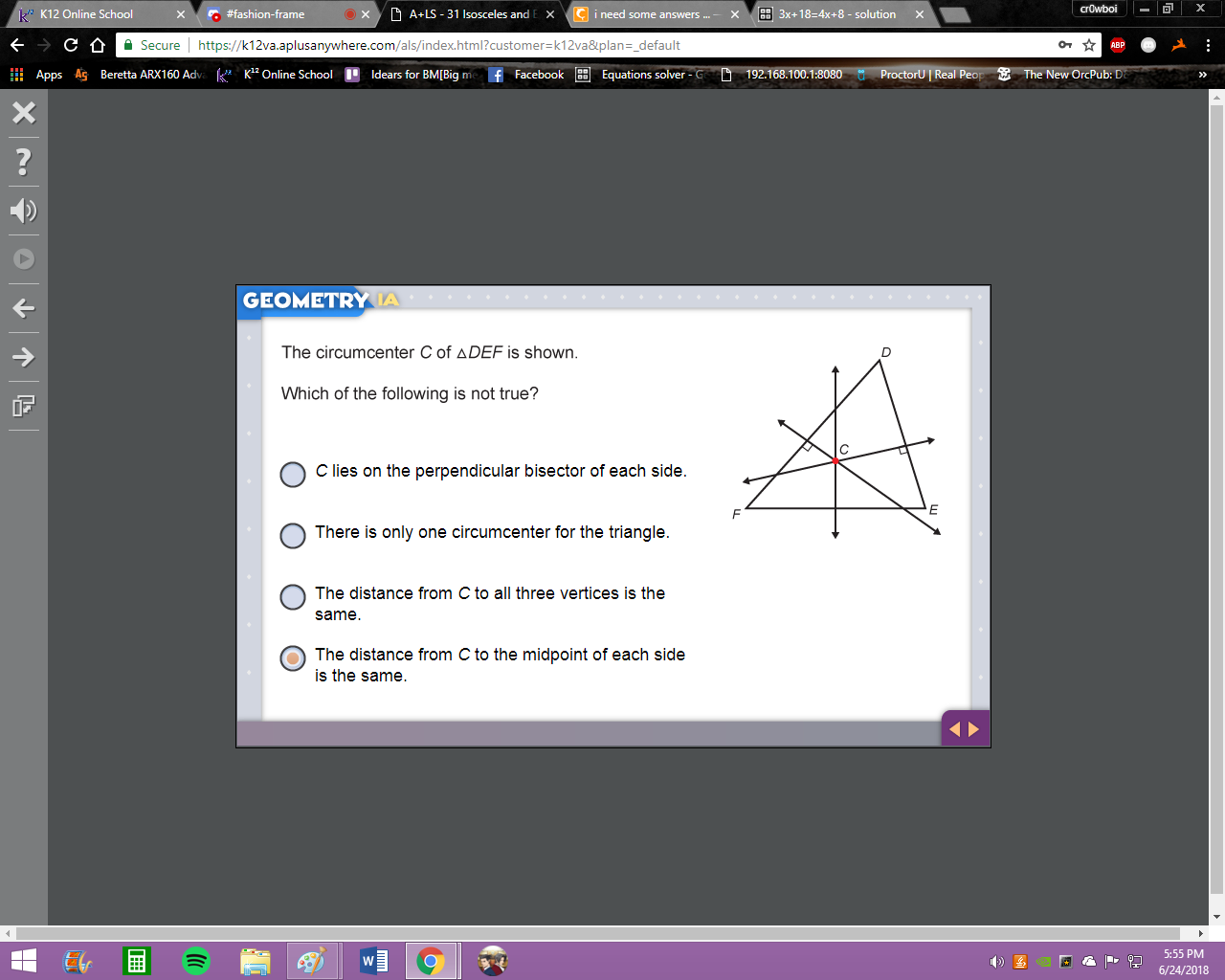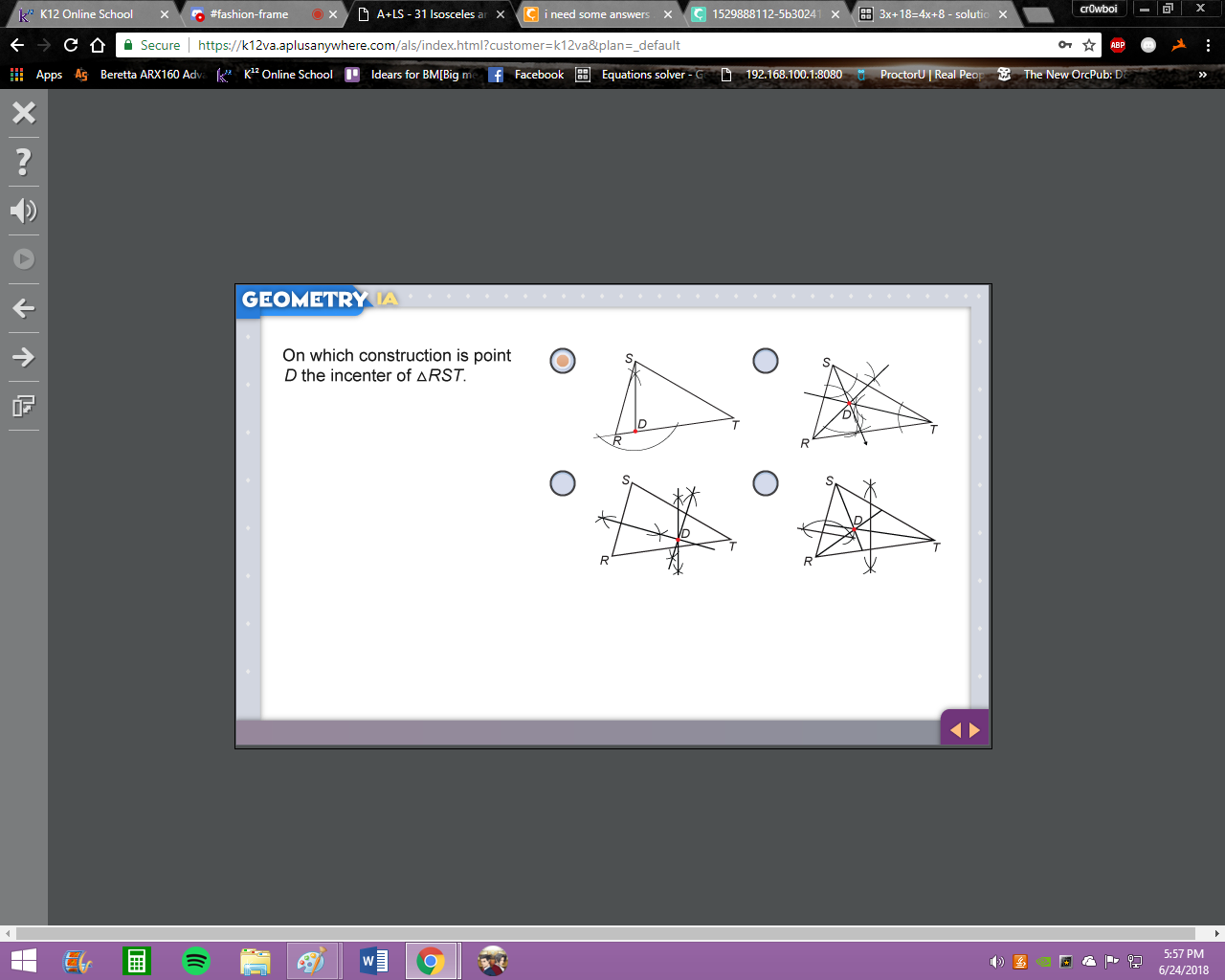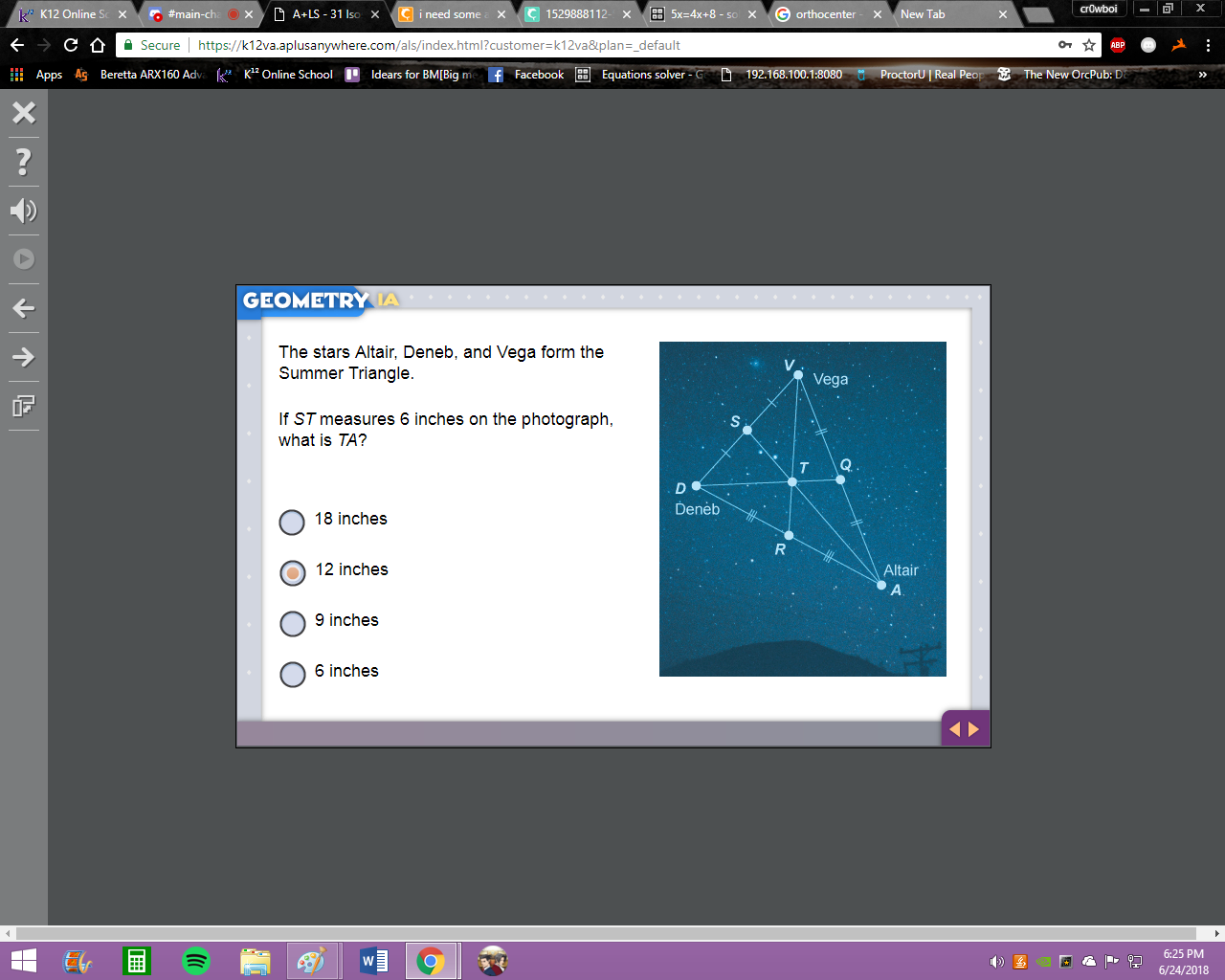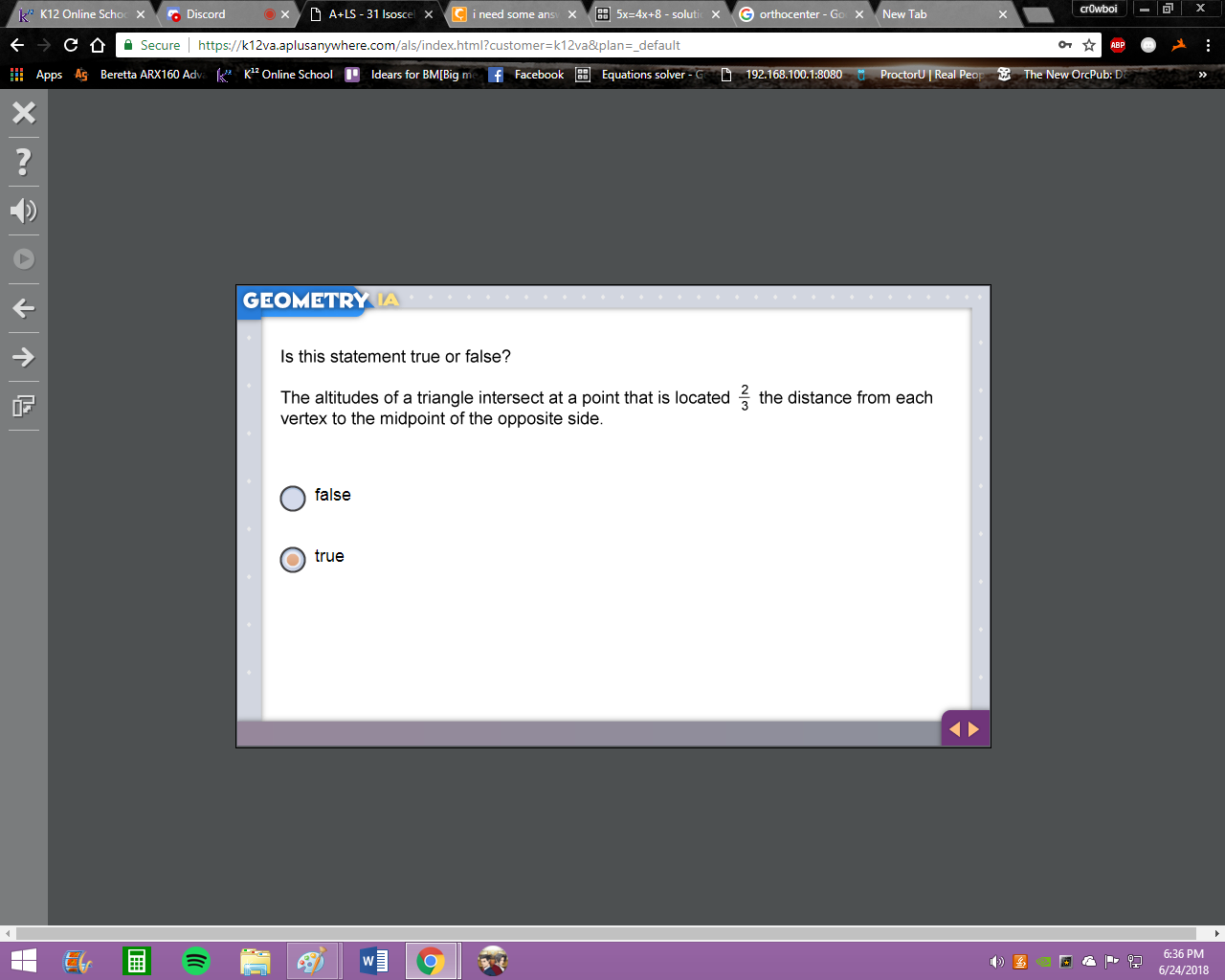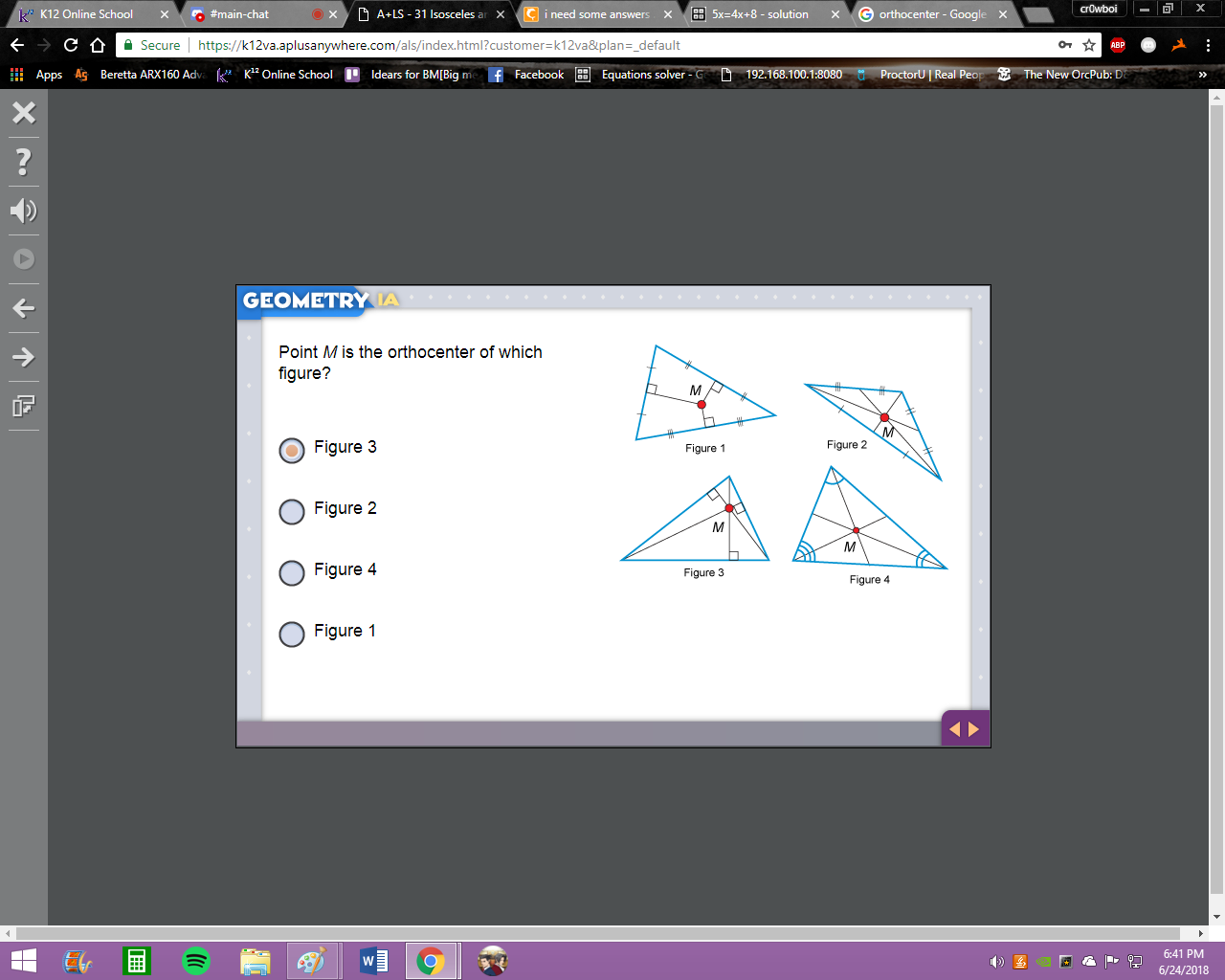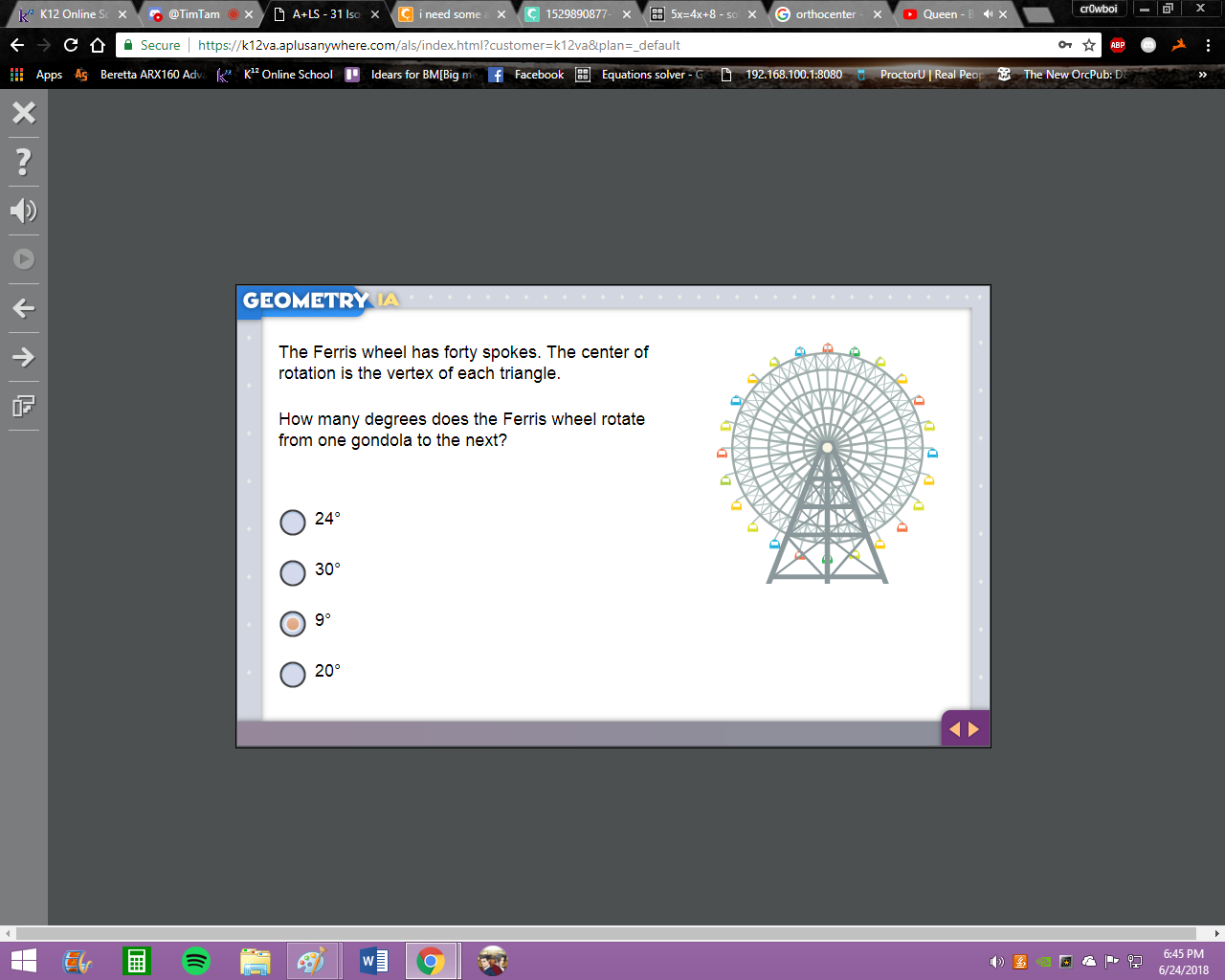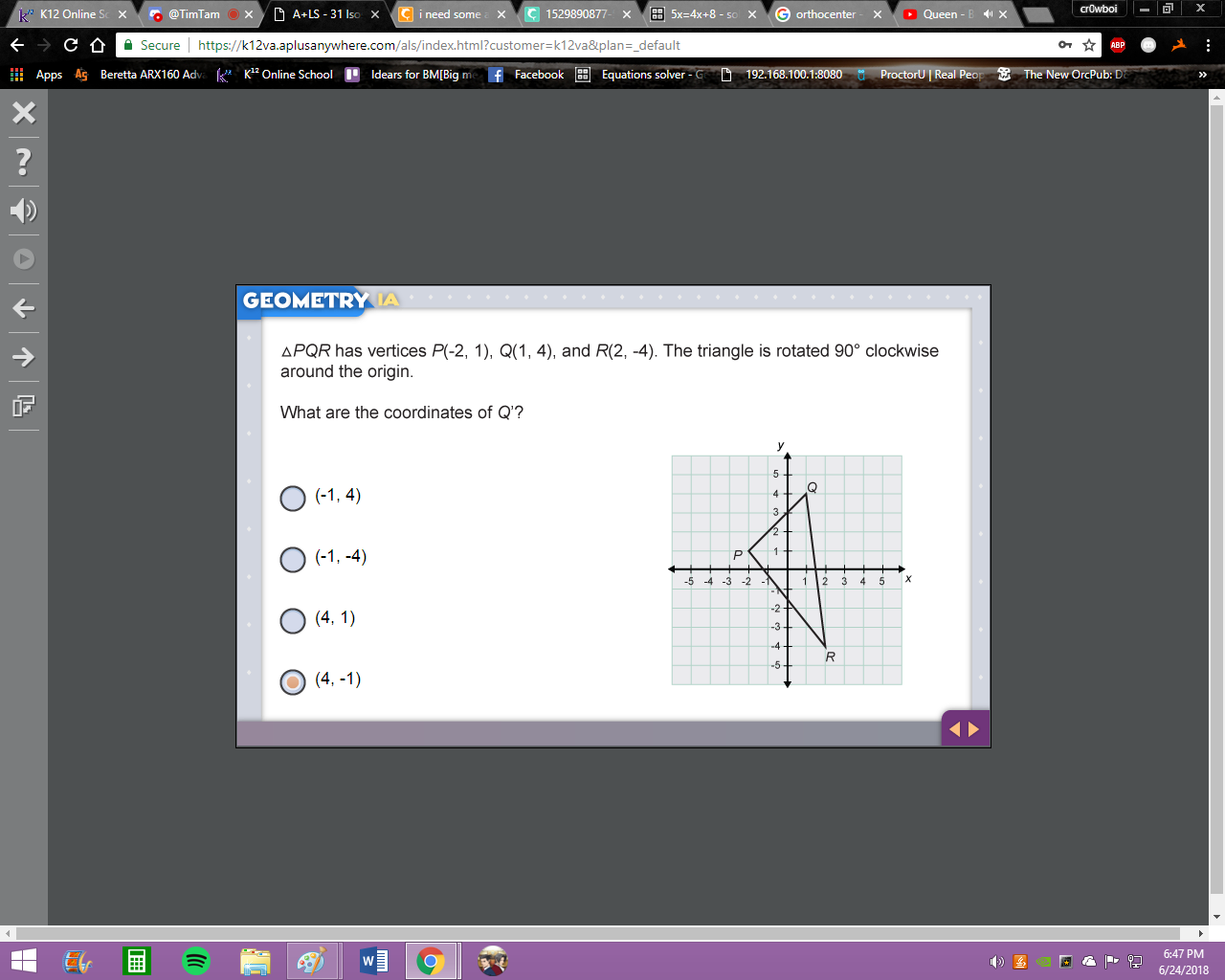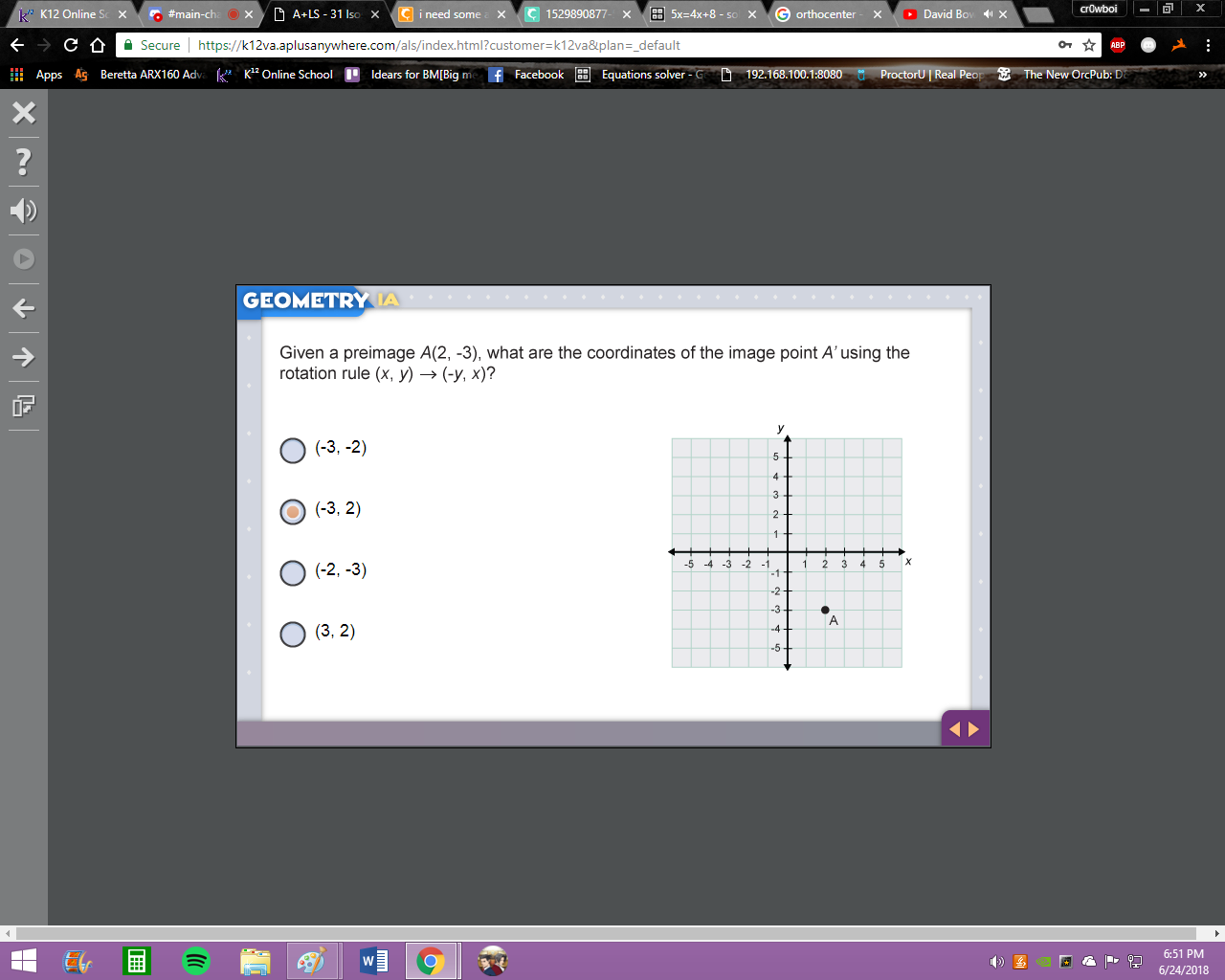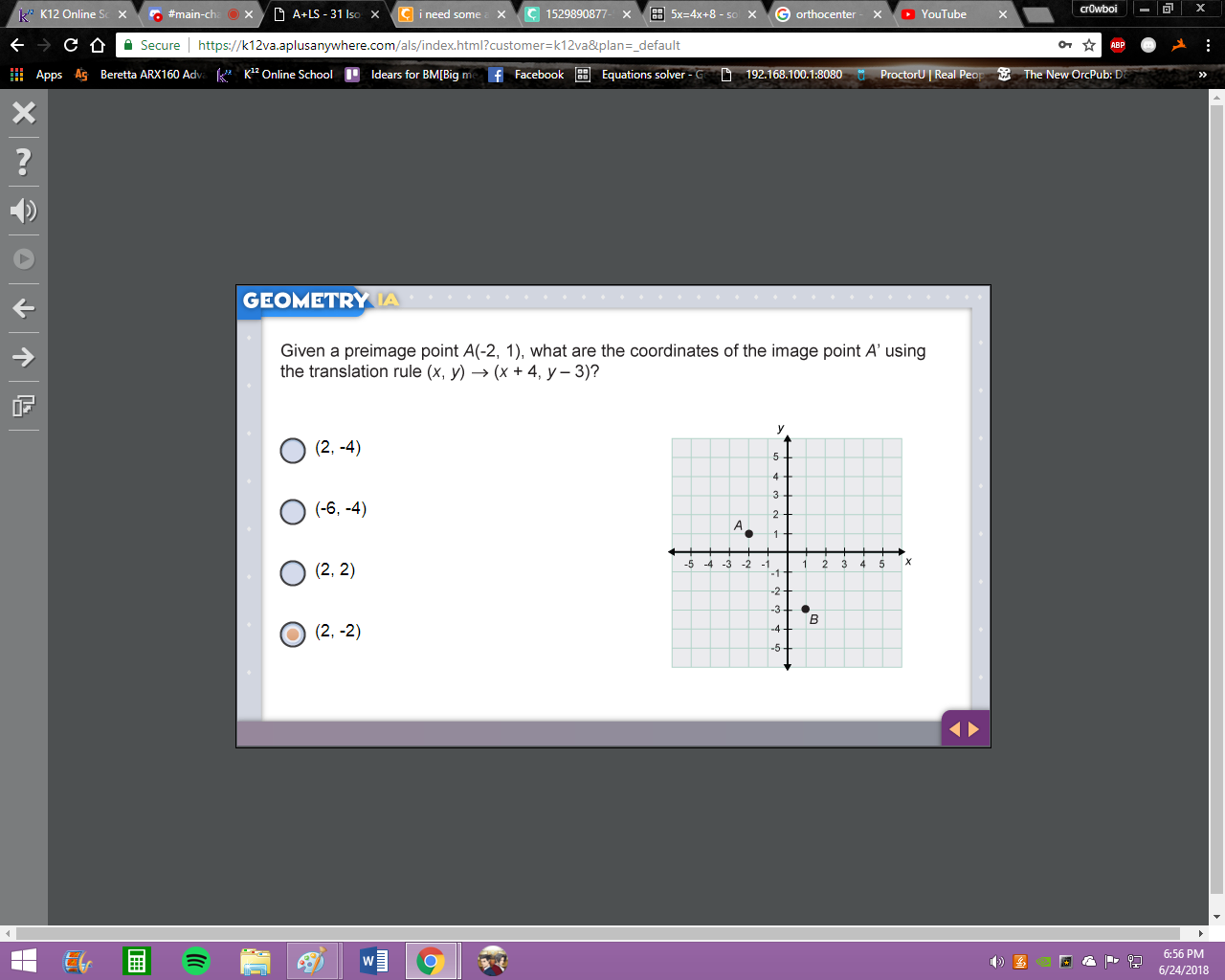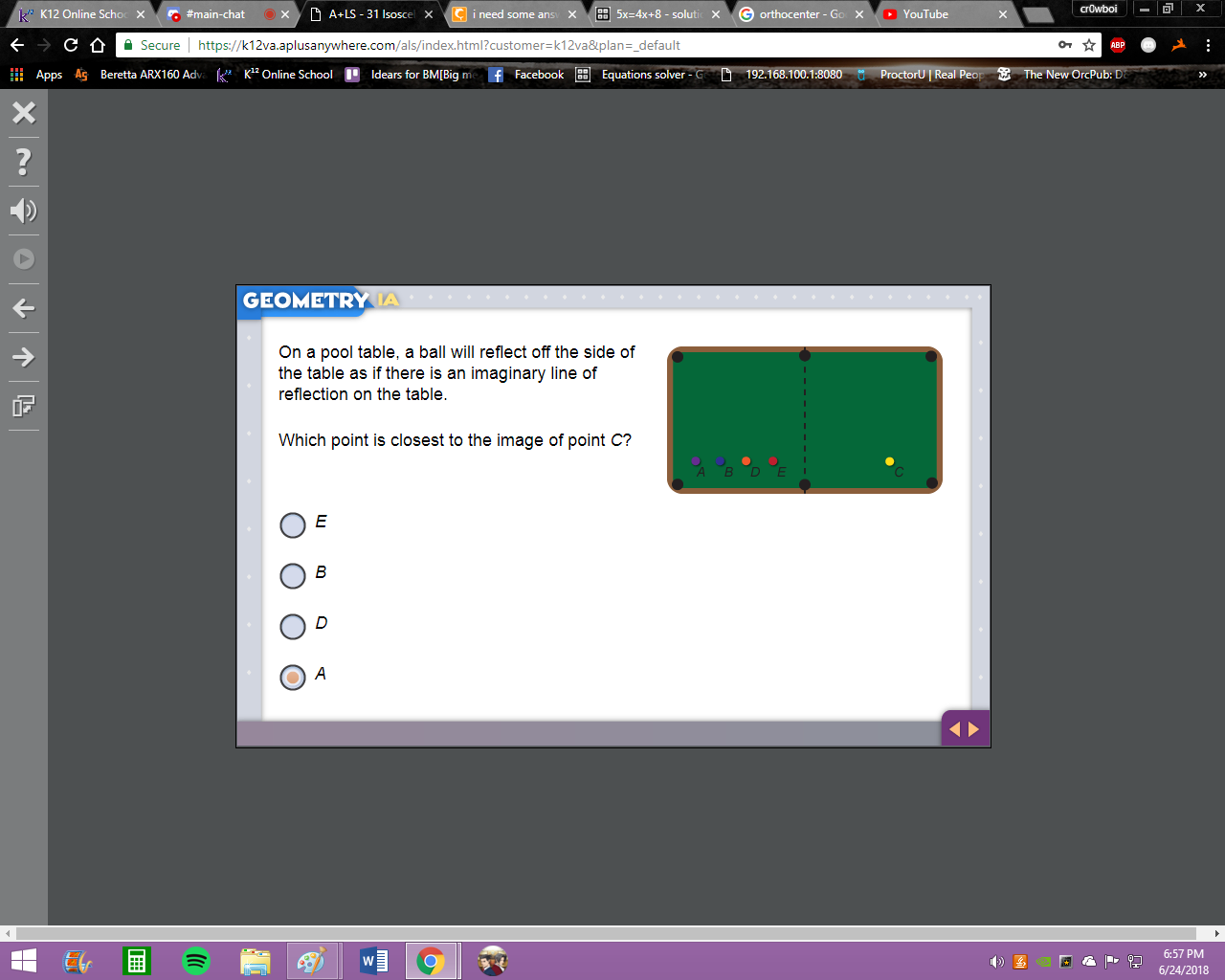Mathematics
69 Online
princeevee:
i need some answers checked
5 years ago
Join the QuestionCove community and study together with friends!
Sign Up
princeevee:
5 years ago
princeevee:
@Vocaloid
5 years ago
Vocaloid:
good
5 years ago
princeevee:
5 years ago
Vocaloid:
|dw:1529881723396:dw|
see how point P is ~outside~ the triangle
5 years ago
Join the QuestionCove community and study together with friends!
Sign Up
princeevee:
yeah
5 years ago
princeevee:
5 years ago
Vocaloid:
good
5 years ago
Vocaloid:
(i'm just gonna switch over to my other account, Mercury, so I can balance out the smartscores a bit)
5 years ago
princeevee:
5 years ago
Join the QuestionCove community and study together with friends!
Sign Up
Mercury:
hm, not quite, the circumcenter ~is~ equidistant from the vertices (part of the definition)
5 years ago
Mercury:
any other ideas?
5 years ago
princeevee:
A?
5 years ago
Mercury:
there's only one circumcenter (the balancing point)
looking at B, that's true (definition of circumcenter)
however there's nothing stating the circumcenter is equidistant from the midpoints so D must be the solution
5 years ago
princeevee:
oh, alright...
5 years ago
Join the QuestionCove community and study together with friends!
Sign Up
princeevee:
wait..
5 years ago
princeevee:
are you using another account or something?
5 years ago
Vocaloid:
yes (I'm trying to distribute the smartscore points a bit more evenly since my main account has a lot more points than everybody elses)
5 years ago
princeevee:
ah, alright.
5 years ago
princeevee:
5 years ago
Join the QuestionCove community and study together with friends!
Sign Up
Mercury:
good
5 years ago
princeevee:
5 years ago
Mercury:
good
5 years ago
Mercury:
going to get some dinner be back in a bit
5 years ago
princeevee:
okay
5 years ago
Join the QuestionCove community and study together with friends!
Sign Up
princeevee:
5 years ago
Mercury:
good
5 years ago
princeevee:
5 years ago
Mercury:
huh
this diagram is kind of confusing me but they're probably looking for the incenter which is a bit closer to point C i think
|dw:1529884795472:dw|
5 years ago
princeevee:
5 years ago
Join the QuestionCove community and study together with friends!
Sign Up
Mercury:
good
5 years ago
princeevee:
5 years ago
Mercury:
good
5 years ago
princeevee:
5 years ago
princeevee:
5 years ago
Join the QuestionCove community and study together with friends!
Sign Up
Mercury:
hm not quite, CPCTC would mean we are comparing corresponding parts of different triangles
notice how they are using the fact that the triangles are ~isosceles~ to state that angles ABC and ACB are equal
so ~isosceles triangle theorem~
5 years ago
princeevee:
5 years ago
Mercury:
good
5 years ago
princeevee:
5 years ago
Mercury:
hm not quite
we know that all the dashed lines are equal (definition of circumcenter)
we also know that each side of the triangle gets split in half (again, definition of circumcenter)
but which choice would we ~not~ be able to know based on this info?
5 years ago
Join the QuestionCove community and study together with friends!
Sign Up
princeevee:
MI?
5 years ago
Mercury:
that's a good guess but since we know JI we know that MI is just half of that
notice how LN is the distance from the center to the side of the triangle, we don't know anything about that from the circumcenter definition
so LN = your sol'n
5 years ago
princeevee:
5 years ago
Mercury:
SU is only the bisector if TU and UV are equal
so you just need to set 3x + 18 = 4x + 8 and solve for x
5 years ago
princeevee:
10
5 years ago
Join the QuestionCove community and study together with friends!
Sign Up
princeevee:
48
5 years ago
Mercury:
it asks for the value of x, so 10 not 48
5 years ago
princeevee:
5 years ago
Mercury:
good
5 years ago
princeevee:
5 years ago
Join the QuestionCove community and study together with friends!
Sign Up
Mercury:
good
5 years ago
princeevee:
5 years ago
Mercury:
hm, not quite
incenter means that all the dashed lines are equal
5 years ago
princeevee:
5 years ago
Mercury:
good
5 years ago
Join the QuestionCove community and study together with friends!
Sign Up
princeevee:
5 years ago
Mercury:
good
5 years ago
princeevee:
5 years ago
Mercury:
good
5 years ago
princeevee:
5 years ago
Join the QuestionCove community and study together with friends!
Sign Up
Mercury:
|dw:1529888365716:dw|
the incenter is the intersection of the angle bisectors, right? so we have to at least measure all the angles to bisect them
5 years ago
princeevee:
so the top right one
5 years ago
Mercury:
good
5 years ago
princeevee:
5 years ago
Mercury:
two thirds rule for centroids
UR is 2/3 of TR or in other words
5x = (2/3)(6x+12) solve for x
5 years ago
Join the QuestionCove community and study together with friends!
Sign Up
princeevee:
uh...
5 years ago
Mercury:
start by distributing the 2/3
remember the distributive property
A(B+C) = A*B + A*C
5 years ago
princeevee:
okay..
5 years ago
princeevee:
i need a bit of help trying to figure this one out..
5 years ago
Mercury:
(2/3)(6x+12)
using the logic that A(B+C) = A*B + A*C
(2/3)(6x+12) = (2/3)*6x + (2/3)*12 = ?
5 years ago
Join the QuestionCove community and study together with friends!
Sign Up
princeevee:
(2/3)(18x)=no wait..
5 years ago
princeevee:
12?
5 years ago
Mercury:
order of operations
start by multiplying (2/3)*6x
then multiply (2/3)*12
then add the results together
5 years ago
princeevee:
12, 4, and 8
5 years ago
princeevee:
24
5 years ago
Join the QuestionCove community and study together with friends!
Sign Up
Mercury:
where are you getting 12
(2/3)*6x = 4x (can't forget about the x)
(2/3)*12 = 8
5 years ago
Mercury:
therefore
(2/3)(6x+12) = 4x + 8
5 years ago
Mercury:
now going back to the original equation
5x = 4x + 8
solve for x
5 years ago
princeevee:
8
5 years ago
Mercury:
good so 8 = your sol'n
5 years ago
Join the QuestionCove community and study together with friends!
Sign Up
princeevee:
5 years ago
Mercury:
good
5 years ago
princeevee:
5 years ago
Mercury:
|dw:1529890309148:dw|
each of the midsegments is half the length of the side it's parallel to
5 years ago
Mercury:
in other words, since FD is parallel to AC, FD is one half the length of AC
therefore AC = ?
5 years ago
Join the QuestionCove community and study together with friends!
Sign Up
Mercury:
if FD is half of AC
that means AC is twice FD = ?
5 years ago
princeevee:
9.16
5 years ago
Mercury:
good, so that's your sol'n
5 years ago
princeevee:
5 years ago
Mercury:
hm, this one is actually false
they're describing the orthocenter which doesn't have the 2/3 rule (that's the centroid)
5 years ago
Join the QuestionCove community and study together with friends!
Sign Up
princeevee:
5 years ago
Mercury:
good
5 years ago
princeevee:
5 years ago
Mercury:
good
5 years ago
princeevee:
5 years ago
Join the QuestionCove community and study together with friends!
Sign Up
Mercury:
good
5 years ago
princeevee:
5 years ago
Mercury:
hm not quite
the original point is (2,-3) which means x = 2 and y = -3
so (-y,x) = ?
5 years ago
princeevee:
3,-2?
5 years ago
Mercury:
almost, notice how the sign on x doesn't change
so (3,2) = your sol'n
5 years ago
Join the QuestionCove community and study together with friends!
Sign Up
princeevee:
5 years ago
Mercury:
good
5 years ago
princeevee:
5 years ago
Mercury:
A is too close to the edge of the table
if you try mirroring ball C over the dashed line
it ends up being on ball B not A
5 years ago




